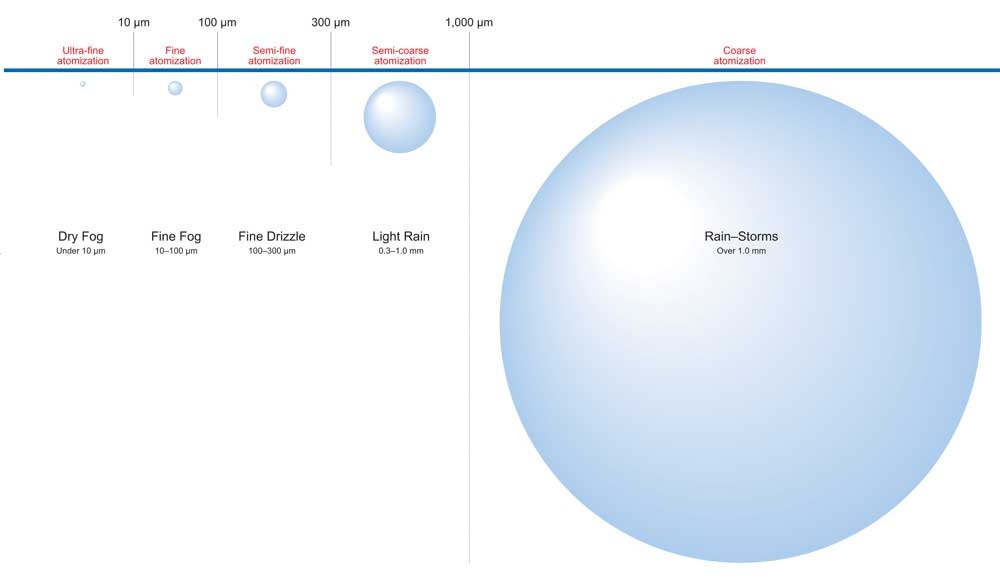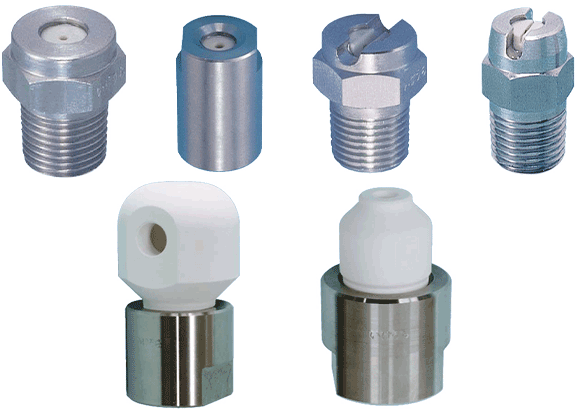July 6, 2023
What is hydraulic atomization?

A hydraulic atomized spraying nozzle (single-fluid nozzle) only utilizes water supply and nothing else. The liquid is pushed through a tiny orifice at high pressure to reach the wanted atomization level.
Compared to pneumatic atomized spray nozzles,a hydraulic atomized nozzle will produce larger droplets due to the lack of compressed air. It is not possible to spray a dry fog or fine mist with this type of nozzle. This method can be used in cases where a larger droplet size is acceptable, for instance in rinsing or cleaning. The technique requires higher maintenance than a pneumatic nozzle due to the pressure on the relatively small orifice.
A hydraulic atomized spraying nozzle does however has a number of features compared to a pneumatic spray nozzle:
- Only water supply needed
A hydraulic atomized spray nozzle only needs water supply. No compressed air or other gas is neccessary. - More cost efficient
Hydraulic atomized spray nozzles are more cost efficient due to their more simple design.
From ultra-fine atomization to coarse atomization
Our atomized hydraulic spraying nozzles can be found in the range from fine atomization between 35-100 μm to coarse atomization around 1800 μm.

Type of spray patterns
Spray pattern means the cross sectional shape of the spray. As illustrated, spray patterns are available in solid stream spray, flat spray, hollow cone spray and full cone spray.
It is important to select a spray pattern suited for each application, thus, delivering the optimal nozzle performance.

Other factors which affect the spray performance
As can be seen in the illustration, spray performance can be affected by a number of factors from spray impact to wear resistance. It is important to choose a spray nozzle which fits well with the application it will be applied to.

Hydraulic atomized spraying nozzles with ceramic orifice
Advantages of ceramic nozzles
- High wear resistance
- High resistance to corrosion
- Can maintain its strength up to 1400°C
- Resistant to most acids and highly corrosive liquid
- Higher chemical resistance compared to metal

